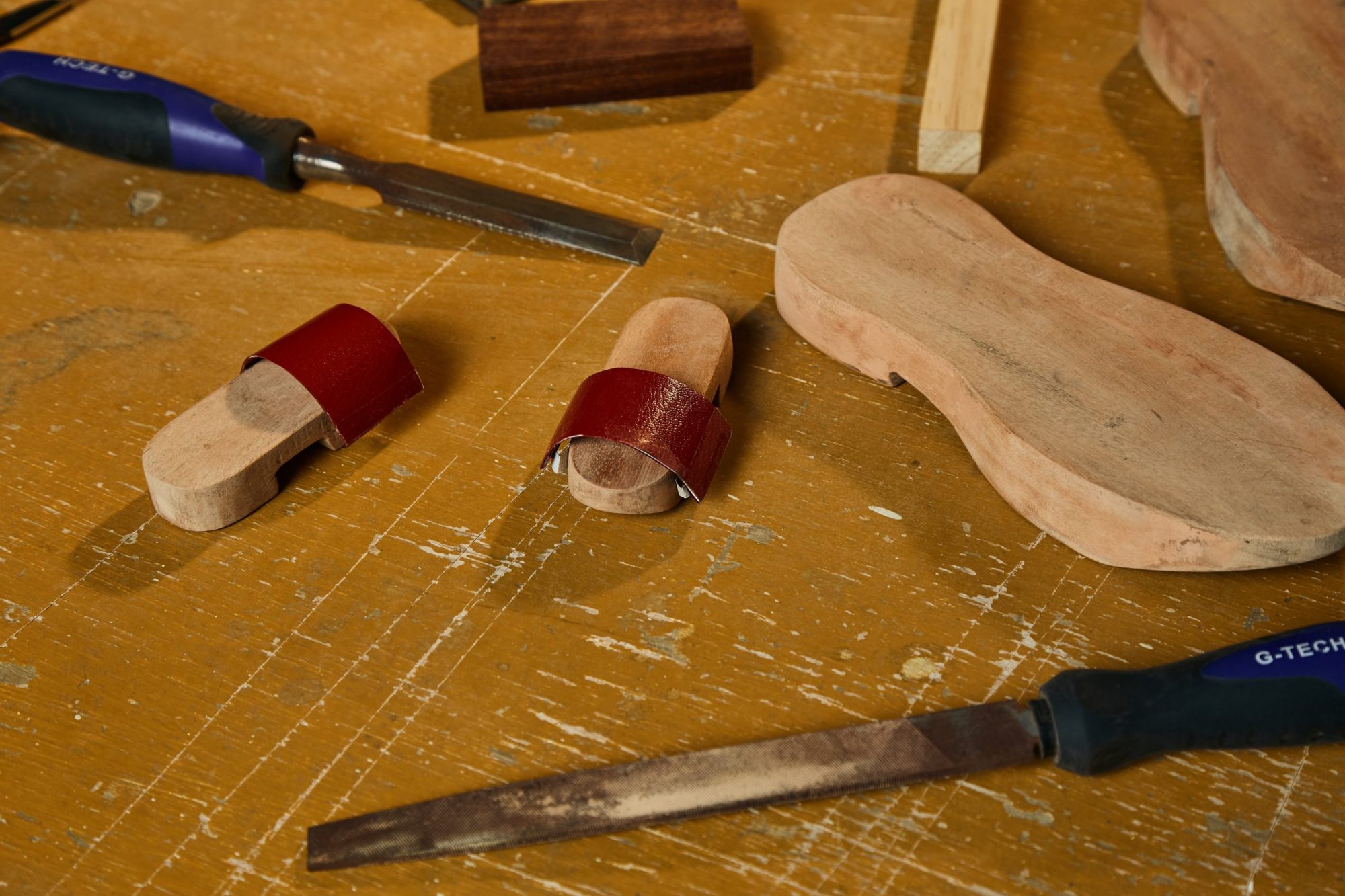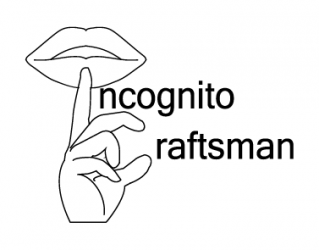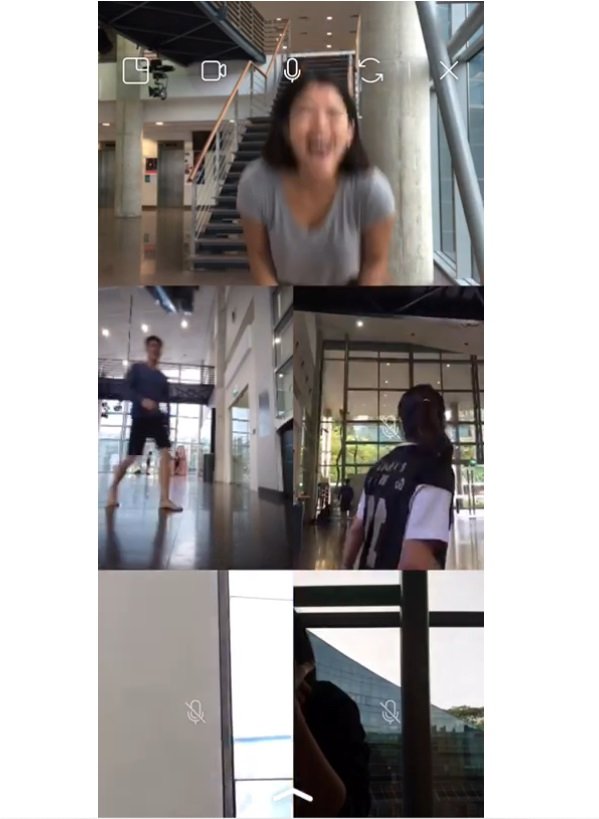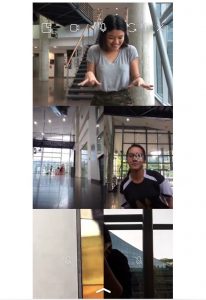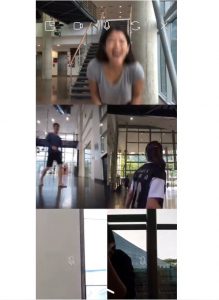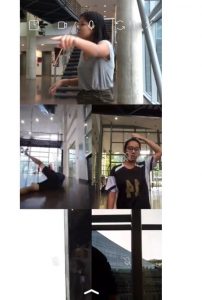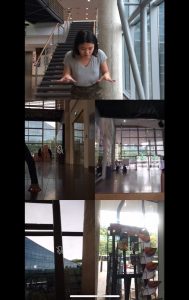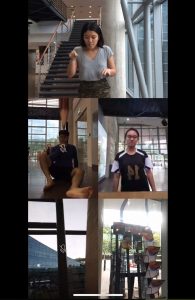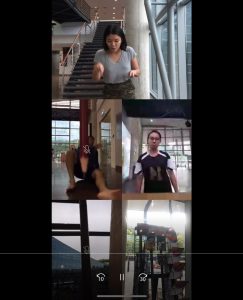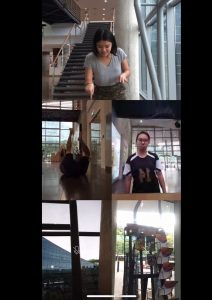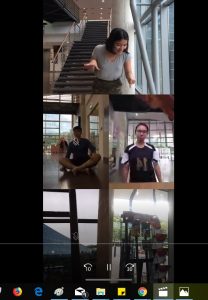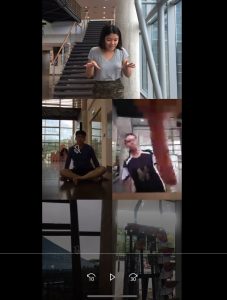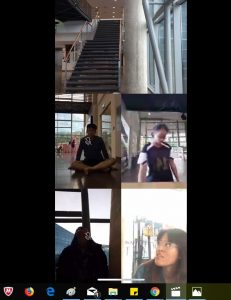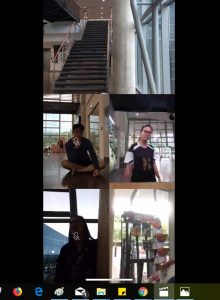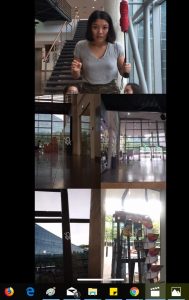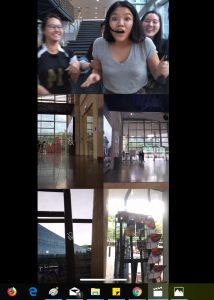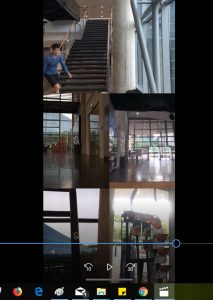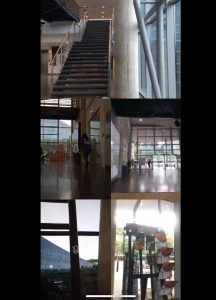This project “Anxiety Sensational” is to raise awareness of Society Anxiety Disorder (SAD) among Singaporean through the test by simulating the symptoms of SAD. SAD sufferers will be subjected to the symptoms of Dizziness, Chest and Stomach muscle tightness when they are in crowded environment. Thus our project is to get testers to wear the set up attire with the IR sensor and vibration motor, before being place within a cramp space with other participants. Their task is simple, crossing from one end to another. Getting into close proximity with the participants will result in the sensor to detect them, triggering the vibration motor to simulate the symptoms. Testers will feel the discomfort and they have to figure how to stop the motor, which is to get out of the space. But maneuvering across the cramp space will trigger difficulties and discomfort, which simulates how SAD sufferer feel in normal daily situation.
Our research






Design process documentation (intermediate designs, sketches, ideas)
These are the documentation processes.


However, things does not goes accordingly to plan when the product is being tested out during storming process as the main feedback pointed out was that if we were to simulate the idea of SAD, it should come with a stronger triggering sensation and discomfort to the testers than to the head as classmates who observed feedback that it is just simulating headache.
After the general feedback, researches were done to enhance the wearable in sync with the symptoms of social anxiety and these were what we had found.
- Dizziness
- Chest Tightness
- Stomach Cramp
The three most common symptoms were the vital body parts of SAD sufferer, which calls for the use of a hoodie or jacket. There were many complications as per how the use of wearable is selected as we have our list of concerns to choose the wearable.




This is a demo testing of how the product works in the actual context of a crowded or narrow environment with high human traffic.
Observational documentation for user tests


Slide presentation and product explanation.
Tester one – Daryl
Tester one – Rui Hong

Instruction manual
The Coding file is in Arduino language and 3D is in STL file.













Voila! Your product is able to work now!
Before going through the manual, I have attached the Coding and 3D Printing File in this link. The coding file has input of the connection of the ports in more detail.
Final thoughts from us.
How do you feel during the process? Do you even still want to cross across the space or just want to turn back and walk away?
References
Unknown. (n.d.). Social anxiety disorder (social phobia). mayoclinic. Retrieved April 20th, 2019 from.
https://www.mayoclinic.org/diseases-conditions/social-anxiety-disorder/symptoms-causes/syc-20353561
https://www.nimh.nih.gov/health/publications/social-anxiety-disorder-more-than-just-shyness/index.shtml
Richards, Thomas. (n.d.). Social Anxiety Fact Sheet: What is Social Anxiety Disorder? Symptoms, Treatment, Prevalence, Medications, Insight, Prognosis. Socialanxietyassociation. Retrieved April 20th, 2019 from.
https://socialphobia.org/social-anxiety-disorder-definition-symptoms-treatment-therapy-medications-insight-prognosis
Higuera, Valencia. (2016). Social Anxiety Disorder. What Is Social Anxiety Disorder? Healthline. Retrieved April 20th, 2019 from.
https://www.healthline.com/health/anxiety/social-phobia
Unknown. (n.d.). More children and teens are stressed out – Department of Psychological Medicine. nusmedicine. Retrieved April 20th, 2019 from.
http://nusmedicine.nus.edu.sg/pcm/2017/03/14/more-children-and-teens-are-stressed-out/
Unknown. (n.d.). Anxiety Disorders Among the Young.adelphipsych. Retrieved April 20th, 2019 from.
https://adelphipsych.sg/anxiety-disorders-among-the-young/
Subramaniam, Mythily. (2017). Stigma among Singaporean youth: a cross-sectional study on adolescent attitudes towards serious mental illness and social tolerance in a multiethnic population. ncbi. Retrieved April 20th, 2019 from.
https://www.ncbi.nlm.nih.gov/pmc/articles/PMC5652546/#
Ng, Charmaine. (Sep 9, 2018). Many still steer clear of people with mental illness: Poll. They agree on need to reduce stigma but harbour misconceptions. Straitstime. Retrieved april 20th, 2019 from.
https://www.straitstimes.com/singapore/many-still-steer-clear-of-people-with-mental-illness-poll
Choo, Cynthia. December 11th, 2018. Mental illness more prevalent among young adults, OCD one of top disorders in S’pore. Retrieved april 20th, 2019 from.
https://www.todayonline.com/singapore/mental-illness-more-prevalent-among-young-adults-ocd-one-of-top-disorders-spore
